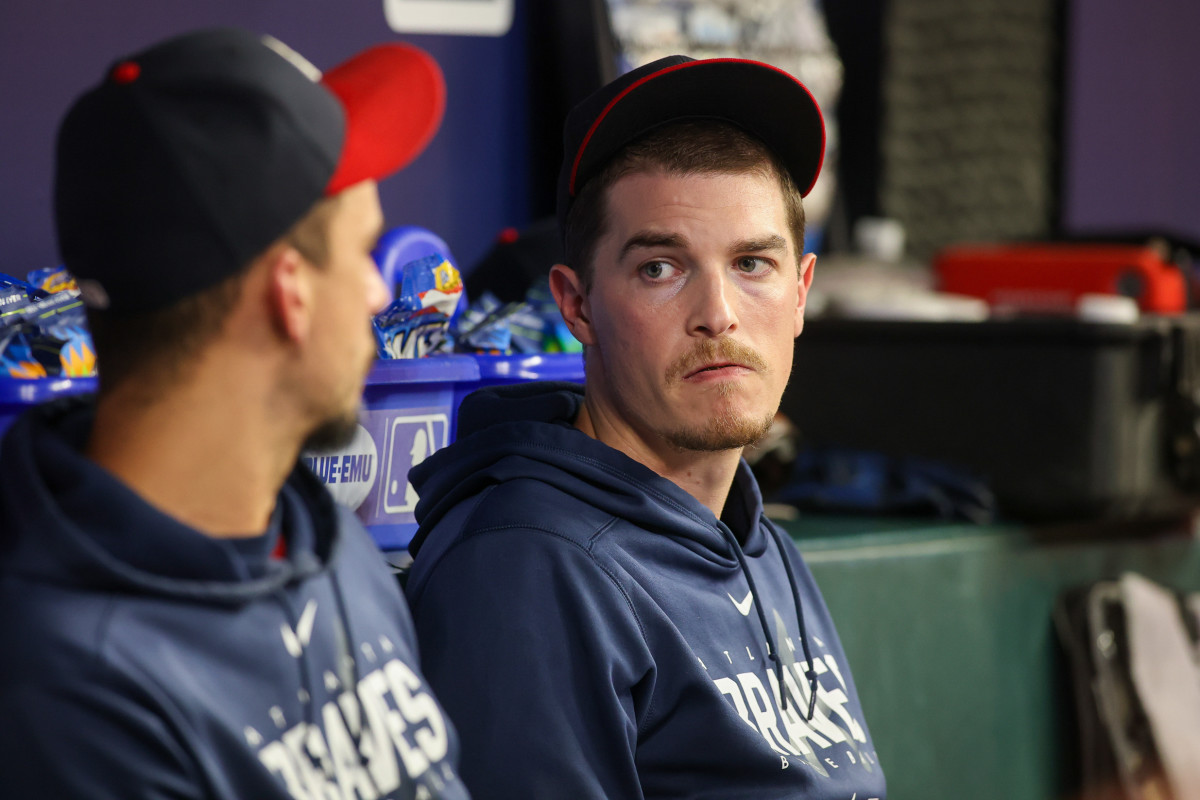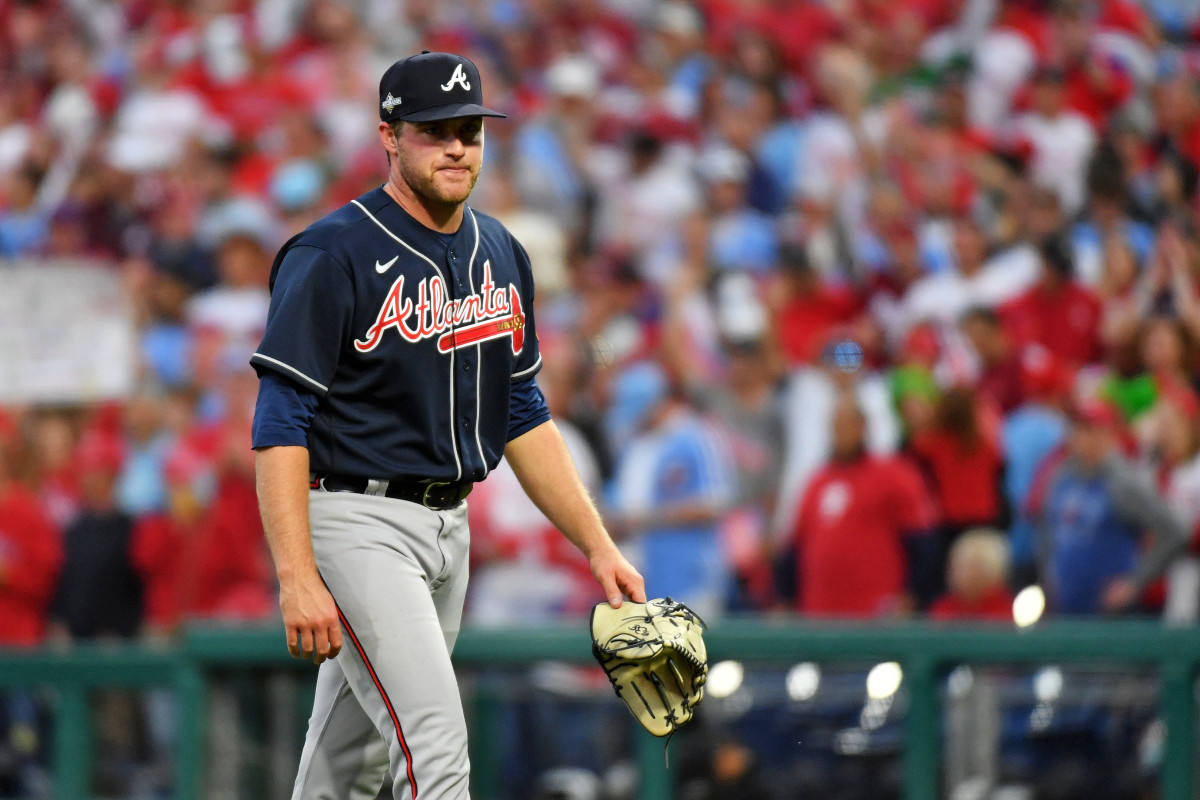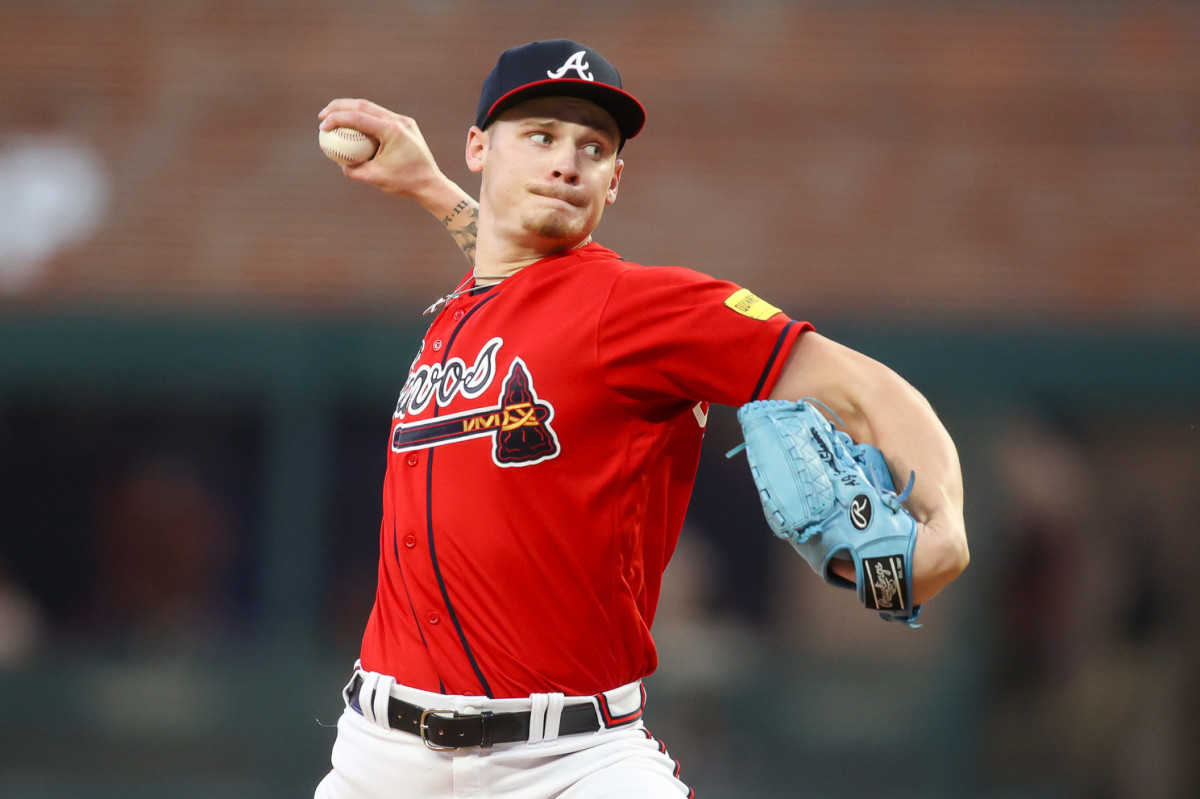Should Atlanta consider a six man rotation?
After the Atlanta Braves acquired Boston Red Sox starter Chris Sale via trade on Saturday afternoon, one of the repeated themes of president of baseball operations Alex Anthopoulos' media availability was that the team intended to do everything they could to keep the oft-injured Sale on the mound in 2024.
"We'll make sure to do what we can to keep him on the mound [...] we've done a good job getting guys rest between starts, and so on."
Sale, 34, has been one of the best pitchers in baseball when healthy, finishing in the top ten of Cy Young voting seven different times in his career. He's one of two active pitchers, along with Clayton Kershaw, to have at least 2,000 career strikeouts and a Fielding Independent Pitching (FIP) under 3.00.
But that health is the big caveat - Sale has pitched under 150 innings combined since 2019, as a 2020 Tommy John surgery, a rib injury, and a broken finger have all sidelined him at various points. 102.2 of those innings were last season, however, as he made 20 starts for the Red Sox, with a 6-5 record and 4.30 ERA.
And in Atlanta, Sale is afforded the luxury of being a contributing piece rather than being relied on to carry the rotation. Red Sox manager Alex Cora announced in late September that Sale would be the 2024 Opening Day starter for Boston, but now that he's in Atlanta's rotation, he may not even get one of the three spots for opening weekend in Philadelphia. Max Fried, Spencer Strider, and (due to seniority) Charlie Morton may all be ahead of Sale in the pecking order to open the season, pushing Sale back to game one of the road series against the Chicago White Sox on Monday, April 1st.
(This is all dependent on matchups - the team may want the lefty Sale to face Philadelphia in game three, pushing the righty Morton to the opener versus the White Sox.)
But one thing that several teams have done to try and both utilize starting depth and ease the workloads on their existing rotation is carry a sixth starter - is this something Atlanta might try in 2024?
Arguments for a six-man rotation

The biggest advantage to a six-man rotation is easing the full season workload on your frontline options, keeping them healthy for the postseason.
Adding an additional starter during the season could conceivably reduce the max number of starts any given pitcher might make from 32 or 33 to only 27, shaving off anywhere from 25 to 30 innings off of their full-season total.
(Last season, Spencer Strider made 32 starts, pitching 186.2 innings, Bryce Elder made 31 starts, pitching 174.2 innings, and Charlie Morton made 30 starts, pitching 163.1 innings.)
For a rotation that saw Elder falter in the second half under his career-high workload and had ace Max Fried pitch only 77 innings owing to three separate injured list stints, saving regular season innings should conceivably allow them to reallocate them for the postseason, keeping them fresher for October and better able to take larger workloads in the playoffs.
Additionally, Sale and Morton presumably could use the additional rest, as Sale's 102.2 innings were his highest total since 2019 and Morton's now forty years old.
Arguments against a six-man rotation

It comes down to routine and roster flexibility.
Most pitchers, by the time they hit the major leagues, have acclimated to the routine of pitching every five days. Baseball players are creatures of habit, and changing to pitching every six days (with extra rest, off days, and rain postponements pushing that to seven on occasion) could be detrimental to existing player routines.
Additionally, there's this idea that sinkerballers like Bryce Elder actually pitch slightly better when fatigued, an idea often discussed by Braves radio announcer Joe Simpson. When the goal is to keep the ball down in the zone, as a sinker/slider pitcher tries to do, it's often easier to miss "up" when there's more life and energy behind the sinker than if you're a bit fatigued.
This is mostly anecdotal - there's very little empirical work done on pitch movement and locations correlated with days of rest, but in a small (and possibly not statistically significant sample) from last season, Elder performed best on regular rest, and significantly worse on six (or more) days of rest.
Days Rest | Number of Starts | ERA | WHIP |
|---|---|---|---|
4 Days Rest | 13 GS | 3.39 ERA | 1.305 WHIP |
5 Days Rest | 12 GS | 3.42 ERA | 1.169 WHIP |
6+ Days Rest | 6 GS | 5.83 ERA | 1.466 WHIP |
Additionally, adding a starter takes one pitcher away from your bullpen, so you're distributing that additional relief workload amongst one fewer arms. For an Atlanta pen that arguably overused AJ Minter early in the season, that could be an issue.
But Atlanta has multiple relief options that can go multiple innings, and there could be a setup where Reynaldo López is your multi-inning option with a lead and Jackson Stephens is your multi-inning option with deficits and/or mop-up duty. Additionally, that sixth starter option could potentially be designated as a probable starter unless they're needed in long relief, as we saw Darius Vines and Michael Soroka used late last season.
So what would a six-man rotation look like for Atlanta?

Not much would change at the top, with Anthopoulos calling Strider, Fried, Morton, and Sale "locks" last Saturday.
Behind them would presumably be Bryce Elder, and then the best way to manage it would be to rotate depth pitchers through that #6 spot (unless someone seized it and excelled, and even then, full-season workloads would be a concern for most of those options.)
Due to the limitations on the number of times a player could be optioned to the minors in one season, giving each arm multiple starts before sending him back down would be the preferred method.
Behind Elder, Atlanta could rotate starts through the following pitchers:
RHP AJ Smith-Shawver
LHP Dylan Dodd
RHP Darius Vines
RHP Allan Winans
RHP Huascar Ynoa
RHP Hurston Waldrep (not on 40-man roster)
Additionally, RHP Ian Anderson (Tommy John surgery) is expected to begin rehab assignments over the summer (as of now) and could eventually slot into the rotation, as well, if he's prepared and his "stuff" is back.
Should Atlanta try a six-man rotation?
There's pros and cons to both options. Early in the season, there's usually some additional off days, but also most pitchers aren't as stretched out as they'd be midseason. As the season progresses, injuries (which are inevitable) probably put a damper on the plan and require dropping back to five, but it's at least worth exploring as the Braves look to ensure they have multiple frontline options healthy and available for the postseason.
Important Braves Today Offseason Stories
2023 MLB Free Agent Rankings
Current Atlanta Braves prospect rankings
Current Atlanta Braves 40-man roster
Key offseason dates for the Atlanta Braves
Projecting the 2024 Atlanta Braves' arbitration salaries
Check out Braves Today on Socials!
Follow Braves Today on Twitter!
Like Braves Today on Facebook!
Check out the homepage for more Atlanta Braves News!
Subscribe to Braves Today on YouTube!
Get Exclusive Braves Merchandise from FOCO
